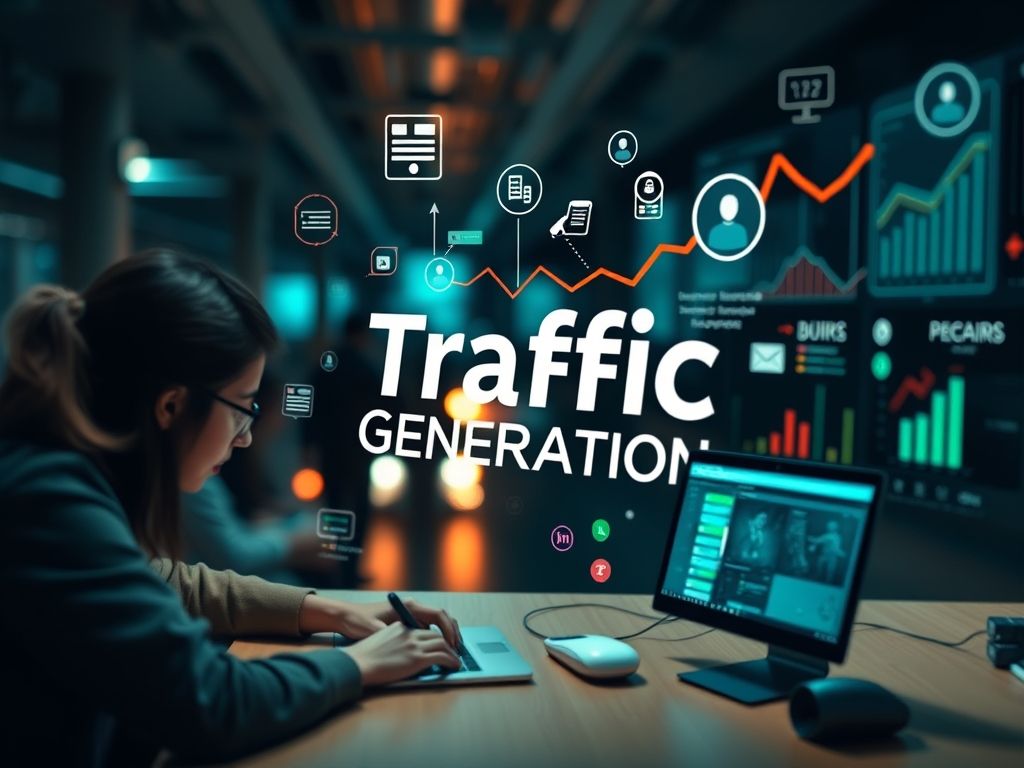Understanding Traffic Generation
Traffic Generation refers to the various strategies and techniques used to attract visitors to a website. In the vast landscape of digital marketing, this concept is critical as it directly impacts online visibility, user engagement, and ultimately, conversion rates. Effective traffic generation combines different methods, ranging from organic search to social media campaigns, creating a robust ecosystem that draws potential customers to your digital platforms.
The Importance of Traffic Generation
In today’s digital age, businesses thrive on web traffic. Without a steady flow of visitors, even the most well-designed websites can struggle to achieve their objectives. Traffic generation is essential for:
- Increasing Visibility: More traffic means higher visibility on search engines and social media platforms.
- Enhancing Brand Awareness: A well-trafficked site helps build brand recognition and trust among potential customers.
- Boosting Conversion Rates: The more visitors you attract, the higher the chances of converting them into customers.
Key Strategies for Effective Traffic Generation
There are numerous strategies to generate traffic, and understanding these can help optimize your marketing efforts. Here are some of the most effective:
1. Search Engine Optimization (SEO)
SEO is the practice of optimizing your website to rank higher in search engine results. It involves keyword research, on-page optimization, and backlinking. For example, if you run a local bakery, optimizing for keywords like “fresh bread in [Your City]” can attract local customers searching for your products.
2. Content Marketing
Creating valuable content that resonates with your audience can significantly boost traffic. This includes blog posts, videos, and infographics. For instance, a fitness brand might publish workout guides or nutrition tips, attracting health-conscious visitors to their site.
3. Social Media Marketing
Platforms like Facebook, Instagram, and Twitter are powerful tools for traffic generation. By sharing engaging content and interacting with followers, businesses can drive traffic back to their websites. A clothing brand, for example, might showcase its new collection on Instagram, linking back to its online store.
4. Paid Advertising
Pay-per-click (PPC) campaigns and social media ads can provide immediate traffic boosts. Companies can target specific demographics to maximize their reach. For example, an online course provider could use Google Ads to attract aspiring learners searching for educational resources.
Measuring Traffic Generation Success
To evaluate the effectiveness of your traffic generation strategies, it is crucial to monitor specific metrics, including:
- Website Traffic: Use tools like Google Analytics to track the number of visitors.
- Bounce Rate: The percentage of visitors who leave after viewing only one page indicates the quality of your content.
- Conversion Rate: The percentage of visitors completing a desired action, such as making a purchase or signing up for a newsletter.
Practical Applications of Traffic Generation
Implementing traffic generation strategies can be straightforward. Here are some actionable steps you can take:
- Set Clear Goals: Define what you want to achieve with your traffic generation efforts, whether it’s increasing sales, building an email list, or enhancing brand awareness.
- Utilize SEO Best Practices: Research relevant keywords and incorporate them naturally into your content.
- Create Engaging Content: Focus on producing high-quality, informative, and entertaining content that encourages sharing.
- Leverage Social Media: Regularly post updates and engage with your audience to maintain visibility.
- Monitor and Adapt: Use analytics to track your performance and adjust your strategies based on what works best.
Related Concepts in Traffic Generation
Understanding traffic generation also involves recognizing related concepts that enhance your strategy:
- Lead Generation: The process of attracting and converting prospects into someone who has indicated interest in your company’s product or service.
- Search Engine Marketing (SEM): Paid strategies to increase visibility on search engines, including PPC advertising.
- Influencer Marketing: Collaborating with influencers to reach a wider audience and generate traffic through their established networks.
Conclusion: The Practical Importance of Traffic Generation
In summary, traffic generation is a fundamental aspect of digital marketing that directly influences a business’s success online. By understanding the various strategies and metrics involved, marketers can create effective campaigns that not only attract visitors but also convert them into loyal customers. As you implement these strategies, remember to keep your audience’s needs at the forefront, ensuring that the content you produce resonates with them.
Now, consider how you can apply these concepts in your own marketing strategies. What steps will you take to enhance your traffic generation efforts?









